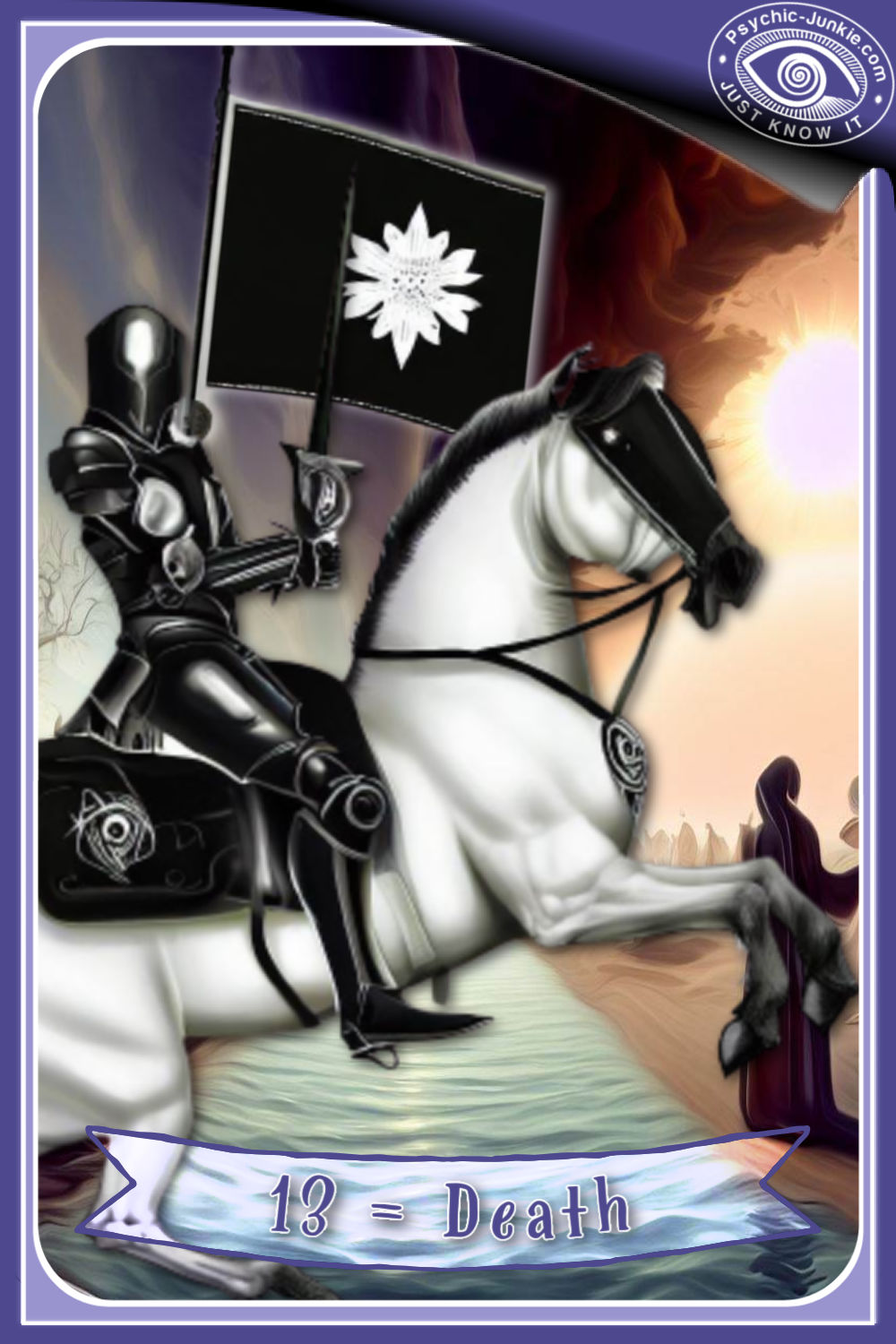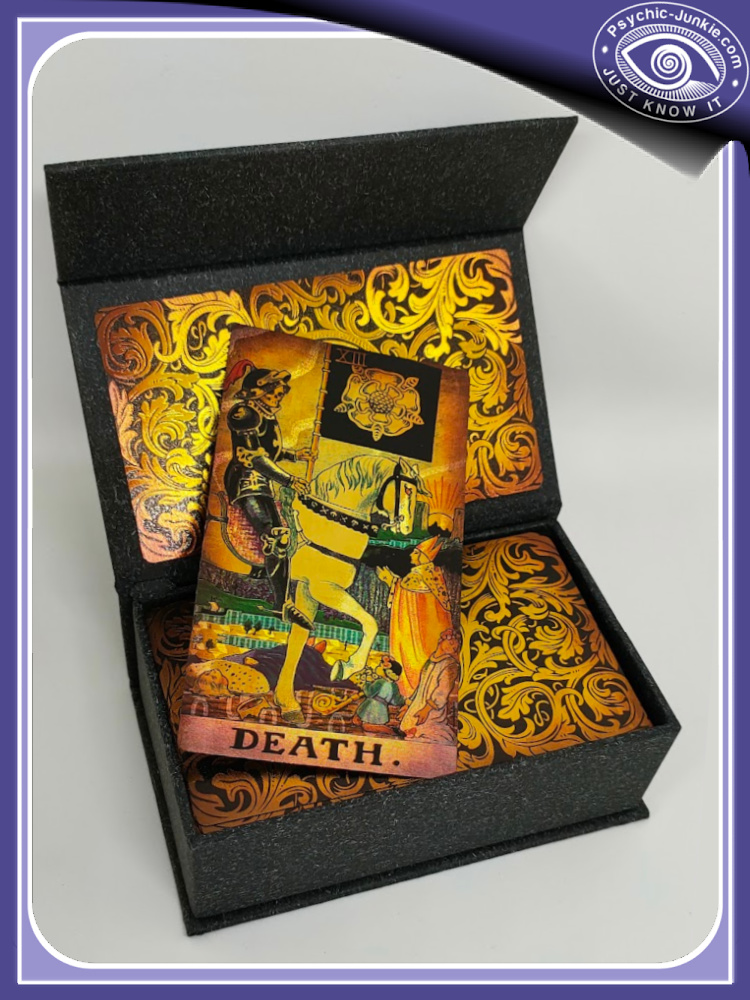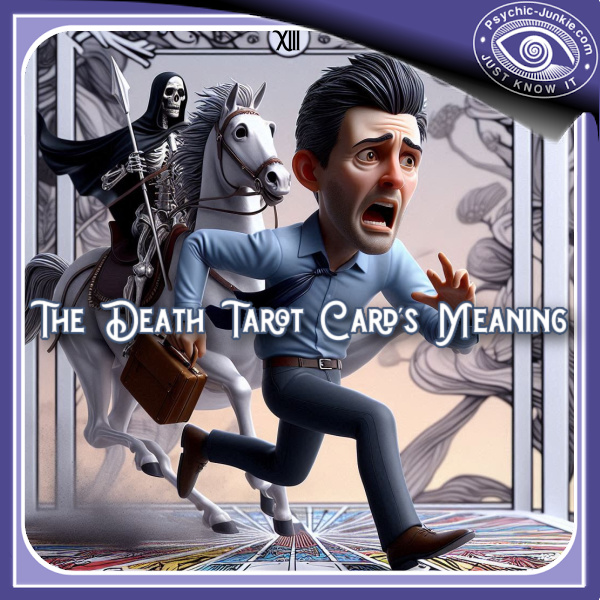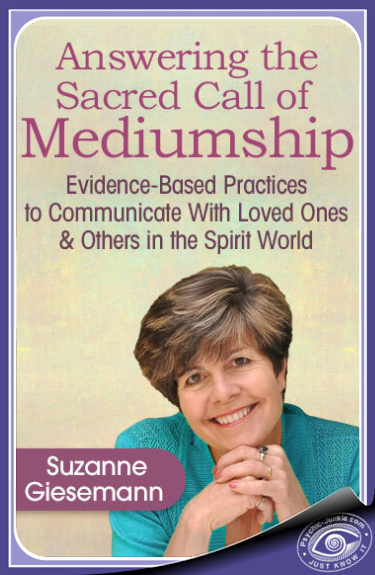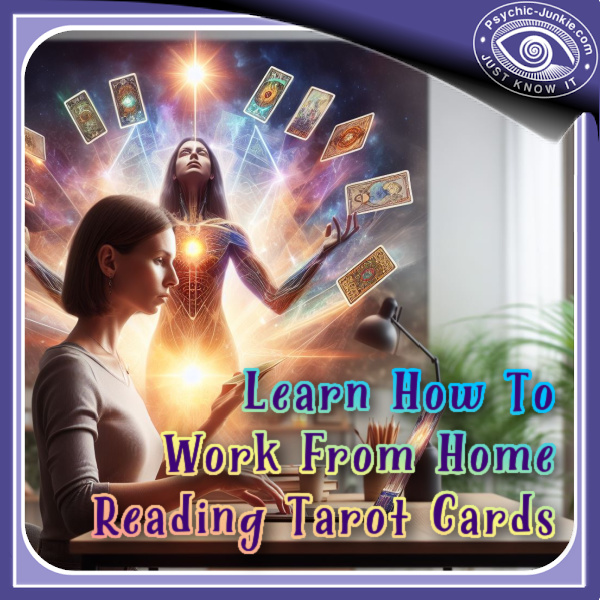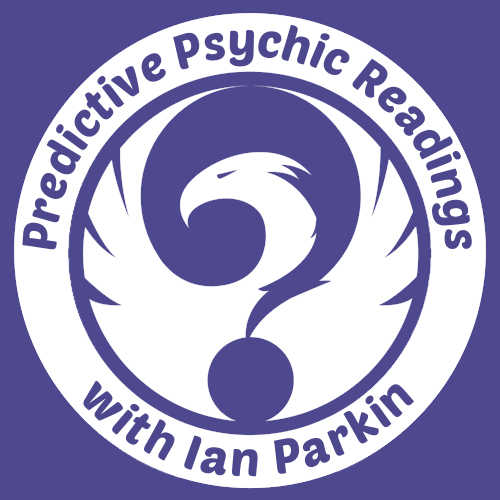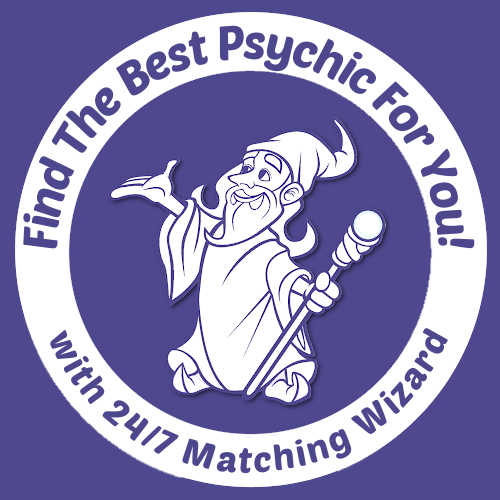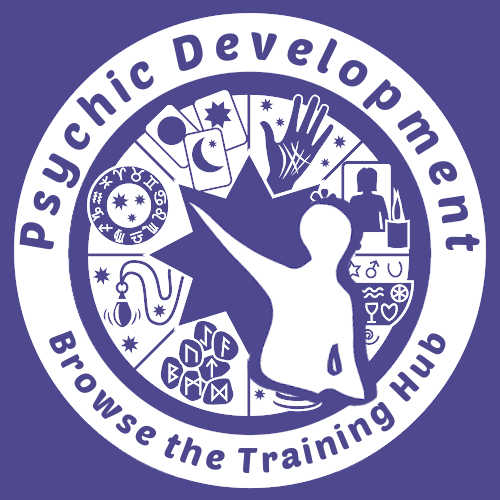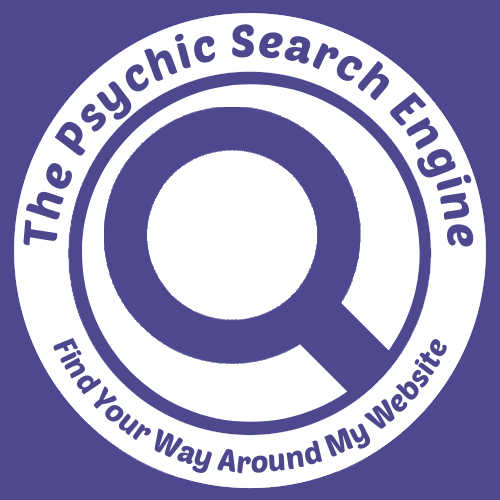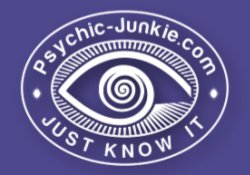- Home
- All Tarot Cards
- The Death Tarot Card
Ian Parkin is the author of this post.
The Death Tarot Card Wrongly Stirs Up A Cocktail Of Fear And Anxiety
Before you jump to grim conclusions, let's clarify one thing: the Death tarot card, despite its rather ominous title, rarely signifies a physical demise. Indeed, this card, number 13 in the Major Arcana, often stirs up a cocktail of fear and anxiety, but delve beneath the surface, and you'll find a deeper, transformative narrative. A tale of change, renewal, and personal growth, a journey in which the old self 'bites the dust' to make way for a new beginning.
Cloaked in mystery, the Death tarot card, in the Rider-Waite-Smith tradition, features a skeletal figure riding a white horse, often interpreted as a representation of purity amidst the turbulence of change. The rising sun in the backdrop, the fall and rise of kings, and the child staring at the spectacle, all speak volumes about the universal and inevitable nature of transformation.
The Thoth and Marseille traditions, on the other hand, take a slightly different tack. The Thoth version portrays the dancing skeleton with various life forms sprouting from it, alluding to the cyclical nature of life and death. The Marseille deck, in its quintessential minimalist style, depicts a grim reaper-like figure, an emblem of the relentless march of change. No matter the deck, the Death tarot card carries a potent message: nothing lasts forever.
Key Aspects About The Death Tarot Card
1. Symbolism: The Death card in tarot is one of the most recognized, featuring a skeleton, often riding a horse, with dead and dying people lying beneath. It's an intense image, symbolizing the end of a cycle and the start of a new one. The skeleton represents the part of the body that survives long after death. This emphasizes the card's theme of renewal and regeneration. The rising sun in the background is also a symbol of rebirth.
2. Main Themes: Contrary to what one might think, the Death card rarely signifies physical death. Instead, it symbolizes transformation, change, and transition. It suggests the end of something—a relationship, a project, a phase—and the start of something new. It's about letting go and making room for new opportunities.
3. Meaning in Readings: When the Death card appears in a reading, it's usually signaling that a significant change is coming, or is needed. The card might suggest that the person is holding onto a situation or relationship that no longer serves them, and they need to let go to move forward. In a reversed position, the Death card can symbolize resistance to change or a personal transformation that is happening more internally.
4. Numerology: The Death card is numbered 13 in the Major Arcana. In numerology, 1 (beginnings) and 3 (creativity and communication) can be combined to get 4 (stability, process, and progress), which symbolizes building a secure foundation for the future. Therefore, the card reflects the process of breaking down old structures to make way for new ones.
5. Astrology: In the realm of astrology, the Death card is associated with the sign of Scorpio. Scorpio is a sign known for its depth of emotion, intensity, and ability to transform. It's a water sign, thus it dives deep into the emotional realm, much like the transformative journey that the Death card suggests.
6. Archetype: The archetype of the Death card is "The Transformer". This encompasses not just physical death, but any form of significant transformation, such as a profound change in belief, relationship shifts, or changes in a life situation. This is the archetype that destroys in order to recreate, clearing the old to make way for the new.
Finding Meaning In The Death Tarot Card
On its head, the Death tarot card signals the end of a chapter, a phase, or a pattern. It's a wake-up call, shaking you out of complacency and nudging you towards personal development and self-discovery. It's about accepting the inevitable, letting go, and moving forward. In essence, it's your personal phoenix moment.
Turned upside down, the Death card presents a double-edged sword. It could imply resistance to change or, paradoxically, a much-needed transformation that's long overdue. Either way, the reversed Death card insists on introspection and emotional house-cleaning.
From a spiritual and psychological perspective, the Death tarot card symbolizes our journey through life, marked by countless deaths and rebirths. Each ending is a stepping stone towards greater self-awareness and personal development. Picture this: you've just broken up with your long-term partner. It feels like the end of the world, right? But here's the kicker, this painful ending might be the catalyst for profound self-discovery and growth.
In a career context, it could signal a significant shift, like a job change or career transition. In matters of love, it might hint at the end of a relationship or a dramatic change within one. On the personal development front, it pushes you towards shedding old habits, stepping out of your comfort zone, and embracing new aspects of yourself. Remember, change is the only constant in life, and the Death card serves as a reminder of this universal truth.
Tracing The Evolution Of This Most Misunderstood Card
Historically, the Death tarot card has always been a bone of contention. Its origins trace back to the mid-15th century, and over the centuries, the card's interpretation and symbolism have sparked many a heated debate. Initially viewed as a portent of physical death, its meaning has evolved, reflecting a more metaphorical concept of death - the death of an old self, an old way of life, or an outdated belief system.
Despite the changing times, one thing remains certain: the Death card is a powerful symbol of transition and transformation, reminding us that endings are just new beginnings in disguise.
The number 13, its position in the Major Arcana, the myriad of symbols decorating the card - everything points to the same profound message: life is an ever-changing dance, a dance with death and rebirth. Whether it's a shift in your career, a transformation in your relationships, or a journey towards personal development, remember: when the Death tarot card comes a-knockin', it's time to let go of the old and welcome the new. Because, after all, every ending is a new beginning. So, why not take it in stride and dance along? After all, change is the name of the game!
Poetically Speaking Up For The Death Tarot Card
In the heart of the deck, whispers start, "The Death Tarot Card," a mysterious art.
An echo of endings, of things put to rest, A herald of change, for life's endless quest.
A skeletal rider, on a horse so pure, Signals a shift, a chance to endure.
Through the dance of life, beneath the sun's glare, Change takes the stage, a chance to prepare.
Oh, Death Tarot Card, bearer of thirteen, Not a symbol of dread, but a transformative scene.
For every closure, a new door swings wide, Life’s cyclical dance, on this, we abide.
An end is a start, a new dawn to chart, A whisper of life from the Death Tarot Card.
Change is our ally, rebirth our reward, In the heart of the ending, a new life is stored.
So, fear not the change, embrace the unknown, In the seeds of the old, a new self is sown.
The Death Tarot Card, not an end, but a start, A poem of life, etched in the heart.
The Rider-Waite version of the Death card is one of the most iconic and often misunderstood cards in the tarot deck. At first glance, it might seem to symbolize physical death, but it's more about the idea of transformation, endings, and new beginnings.
Here's a breakdown of the key elements of the Rider-Waite Death card:
The Rider: The central figure in the card is a skeletal figure riding a white horse, which represents Death itself. The skeleton symbolizes the part of the body that survives long after death. This speaks to the idea of immortality and the eternal cycle of renewal and regeneration.
The White Horse: The white horse represents purity and the cleansing power of destruction, clearing the way for new growth and evolution.
The Black Banner: The figure is holding a black banner with a white rose, a symbol of life, beauty, and purity. This signifies that death isn't the end but a necessary part of the cycle of life, leading to renewal and regeneration.
The Sun Setting/Rising: In the background, there's a sun either setting or rising between two towers. This implies that every ending is followed by a new beginning, much like how the setting sun brings the darkness of night, and the rising sun brings the dawn of a new day.
The King: At the feet of the rider, there is a dead king which signifies that death is a great equalizer; it comes to all, irrespective of their status in life.
The Bishop: There's also a figure of a bishop pleading with the skeleton, representing religious or spiritual beliefs about death and the afterlife.
The Child: There is a child looking up at the figure of Death, which is typically seen as a symbol of innocence and purity. It also indicates that death and transformation are a natural part of life that we should embrace rather than fear.
The Maiden: A maiden lays prostrate before the horse and rider, her hands raised in either prayer or supplication. She symbolizes the fear or respect we often feel in the face of significant changes.
The River: A boat is seen moving across a river in the background, symbolizing the crossing from one phase of life to another. This element refers to the "River Styx," a mythological river that separates the world of the living from the world of the dead.
FAQs For The Death Tarot Card
What does the Death tarot card really signify in a reading?
What does the Death tarot card really signify in a reading?
- The Death Tarot Card also represents rebirth and transformation. Although the Death card may signify a very difficult transformation (the person may reach a terrible low point in their lives depending on their individual scenario) think of it as a snake shedding old skin: it can be difficult and painful for a snake to escape its old skin but it will emerge stronger, better, renewed.
Should I be worried if the Death card shows up in my reading?
Should I be worried if the Death card shows up in my reading?
- No, you shouldn't be alarmed. Despite its ominous name, the Death tarot card typically represents change and transformation, rather than physical death.
Why is the number 13 associated with the Death tarot card and what does it symbolize?
Why is the number 13 associated with the Death tarot card and what does it symbolize?
- The Death card is the 13th card in the Major Arcana. In tarot, 13 is a symbol of transformation and change, aligning perfectly with the Death card's overarching theme of endings and new beginnings.
What are the key differences in the portrayal of the Death card across various Tarot traditions?
What are the key differences in the portrayal of the Death card across various Tarot traditions?
- While the core theme of transformation remains consistent, the portrayal varies across traditions. The Rider-Waite-Smith deck depicts a skeleton riding a white horse, symbolizing purity and transformation, while the Thoth deck presents a dancing skeleton, signifying the dance of life and death. The Marseille tradition, in contrast, takes a minimalist approach, presenting a grim reaper-like figure, symbolizing the inevitability of change.
What could the Death tarot card mean in the context of career, relationships, or personal development?
What could the Death tarot card mean in the context of career, relationships, or personal development?
- In a career context, the Death card could suggest a major job change or a complete career shift. In relationships, it might signal the end of a relationship or a dramatic change within one. For personal development, it indicates the need to shed old habits or beliefs, pushing you towards growth and self-improvement.
How has the symbolism of the Death tarot card evolved historically?
How has the symbolism of the Death tarot card evolved historically?
- Historically, the Death card was often associated with physical death. However, over time, its interpretation has evolved to reflect more metaphorical concepts of death – the ending of a phase, an old self, or an outdated belief system – heralding transformation and new beginnings.
What does a reversed Death card mean in a tarot reading?
What does a reversed Death card mean in a tarot reading?
- A reversed Death card can denote resistance to inevitable change or, on the flip side, a much-needed transformation that's overdue. It calls for introspection and readiness to let go of the past to move forward.
What are some positive aspects of a Death Card in a Tarot spread?
What are some positive aspects of a Death Card in a Tarot spread?
- One of the most positive aspects of the Death card is that it represents the potential for growth and new beginnings. When something old or outdated is released, it creates space for something new and fresh to emerge. This could mean a new job opportunity, a new relationship, or a new perspective on life. The Death card encourages us to embrace these changes and to have faith in the journey ahead.
- Another positive aspect of the Death card is that it can represent the opportunity for healing and personal growth. When we are forced to let go of something or someone, it can be painful and difficult. However, it can also lead to a deeper understanding of ourselves and the world around us. The Death card reminds us that sometimes we need to experience loss or change in order to learn and grow.
- Lastly, the Death card can also represent the idea of rebirth and renewal. When we let go of the old, we create space for something new and better to emerge. This can be a very positive and transformative experience, as it allows us to leave behind anything that is holding us back and to move forward with a renewed sense of purpose and energy.
Overall, the Death card in a tarot spread can be a positive message that new beginnings, healing, and renewal are on the way.
Is there a funny side to the Death Tarot Card?
Is there a funny side to the Death Tarot Card?
- A humorous interpretation of the Death card is a kick up the pants! You can see it as wake-up call or reminder that it's time to shake things up and get moving with something new.
Have Your Say About The Death Tarot Card
If you would like to ask questions, add answers, or comment on this page please use my contact form. Start the conversation with the heading About The Death Tarot Card.
Or if you're inspired to write an article on this subject please submit a guest post here.
The Death Tarot Card Meaning Is More Inspirational Than Fearful - by Cristina Aguilar
The death tarot card meaning may signify a difficult transformation, think instead of a snake shedding an old skin and emerging stronger, better, and renewed. Enjoy all the intricacies that this card offers and don't be afraid to embrace the end that it warns of. Welcome the new opportunity and the rekindled you that could emerge.
We've all seen it in movies and read about it in horror stories. An inquisitive main character goes to get their fortune told in a dark, secretive room by an old woman with a deck of tarot cards. The woman shuffles the cards and asks the main character to cut the deck and flip over a card. The main characters eyes widen in fright as they realize it is the Death card that they have chosen...
In a deck of 78 Tarot Cards, 22 cards represent very crucial ideas and concepts, with Death being one of them. The Death card is often artfully illustrated with a skeletal figure dressed in robes, red or black roses, a scythe or sword, a setting sun, and a graveyard or headstone. I personally find these illustrations beautiful but to the average person receiving a psychic reading they are terrifying. Physical and mortal death is a concept that has (at least for a moment) frightened every single human being to have ever existed on this planet.
It is impossible to deny that the Death tarot card meaning inspires fear when it appears in a psychic reading, but does it really mean that somebody is going to die? In some cases, the answer is yes. The Death card represents the end of something. Although the Death tarot card meaning could indicate the end of a life it generally refers to the end of something else: a career, a relationship, a project, a friendship, there are many possibilities.
What the Death tarot card meaning teaches us is that there can be no new beginnings without the ending of something else. I am usually excited for my clients when the Death card appears in a reading because I know that along with the coming end of something is a new opportunity or beginning! Death is very necessary in life and it is important to remember that not all endings are bad endings.
Cristina Aguilar (also known as Gypsy Raven) is a folklorist, astrological adviser, expert Tarot reader and award-winning writer. She studied folk magic and learned simple folk traditions from her grandmother who was a village psychic in southern Spain. She is currently a five-star astrological reader with the Kasamba Psychic Network
Learn To Be A Psychic Medium
An Evidence-Based Path to Communicate With Loved Ones & Others in the Spirit World.
In this FREE hour with Suzanne Giesemann, you will: Gain an understanding of “evidential” mediumship and why it’s so sacred. Discover the 3 keys to mediumship: Belief in the Spirit World, alignment, and a shift in focus from the physical to the Spirit World. Learn how you can begin communicating with your loved ones who have passed. Find mediumship can be a path for your soul’s evolution. Hear about what makes a reading “evidence-based” - and how this form of mediumship raises the bar and meets the true goal of being an authentic and indisputable voice for Spirit. Experience a practice to connect with your guides and ask them for signs. Click here to learn more about this free event > >
Test Your Psychic Ability
The Lifeleap Institute’s Psychic Project is a unique online psychic development tool using real people and events as "psychic targets."
They start by asking you to focus on the "psychic targets" and answer a series of special questions about these targets.
They then reveal to you the actual psychic targets. You get to compare your results with the actual psychic targets. You also get to see the results of other participants.
Even if you think you have no psychic ability, this tool will offer proof that you do.
It's easy to participate and the Psychic Project is free!
Click Here To Test Your Psychic Ability
Develop Your Intuition And Become An Online Tarot Card Reader
You can learn how to become a professional online tarot card reader in 90 days or less with Tatiana Jones' bestselling course.
In this short course, Titania teaches everything you need to know to start an online tarot reading business - with zero experience required!
You do not need to be psychic to read tarot cards online! It is all about being intuitive and “connecting the dots”.
Tarot Reading Entrepreneurship
- Help People Find Meaning
- Work Remotely
- Set Your Own Hours
- Replace Your Full Time Income
- Work Just A Few Hours Per Day
- Home
- All Tarot Cards
- The Death Tarot Card
